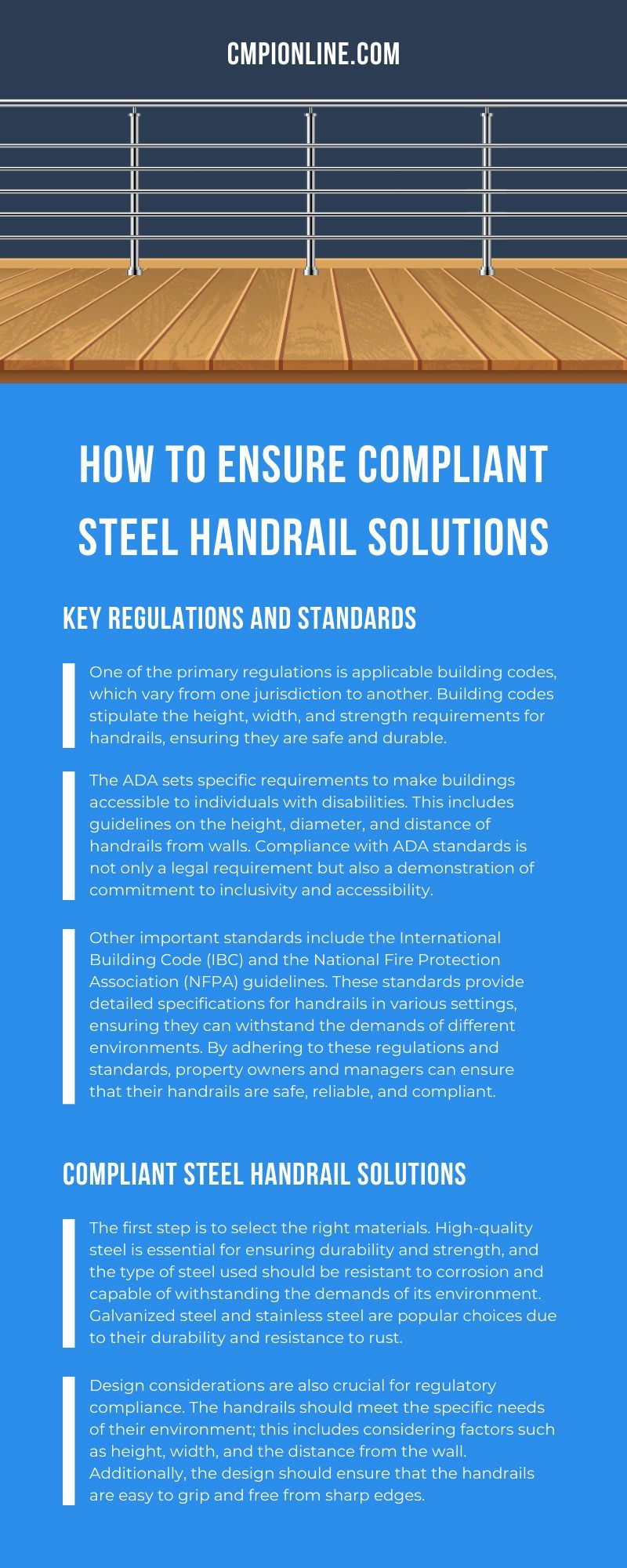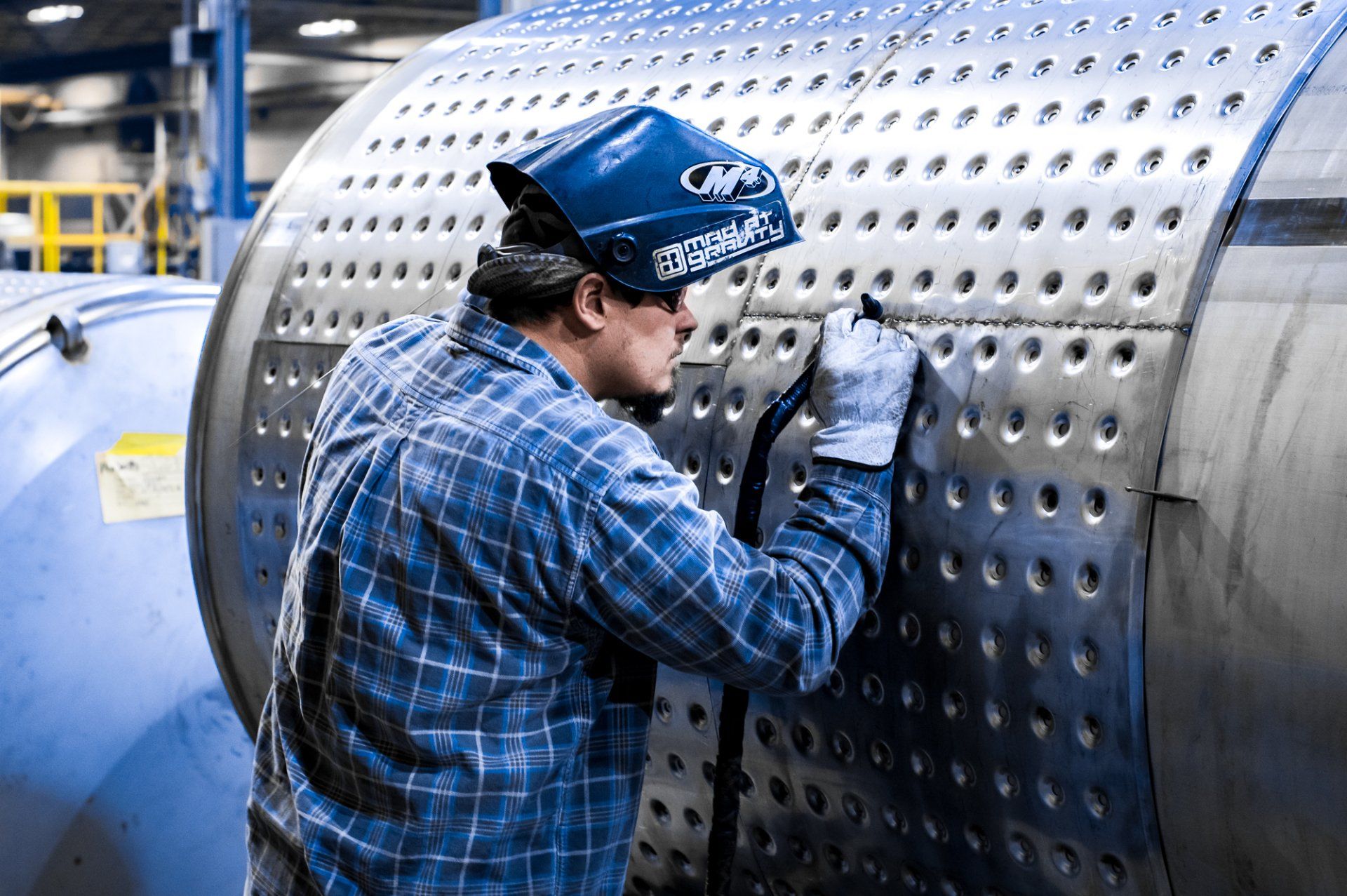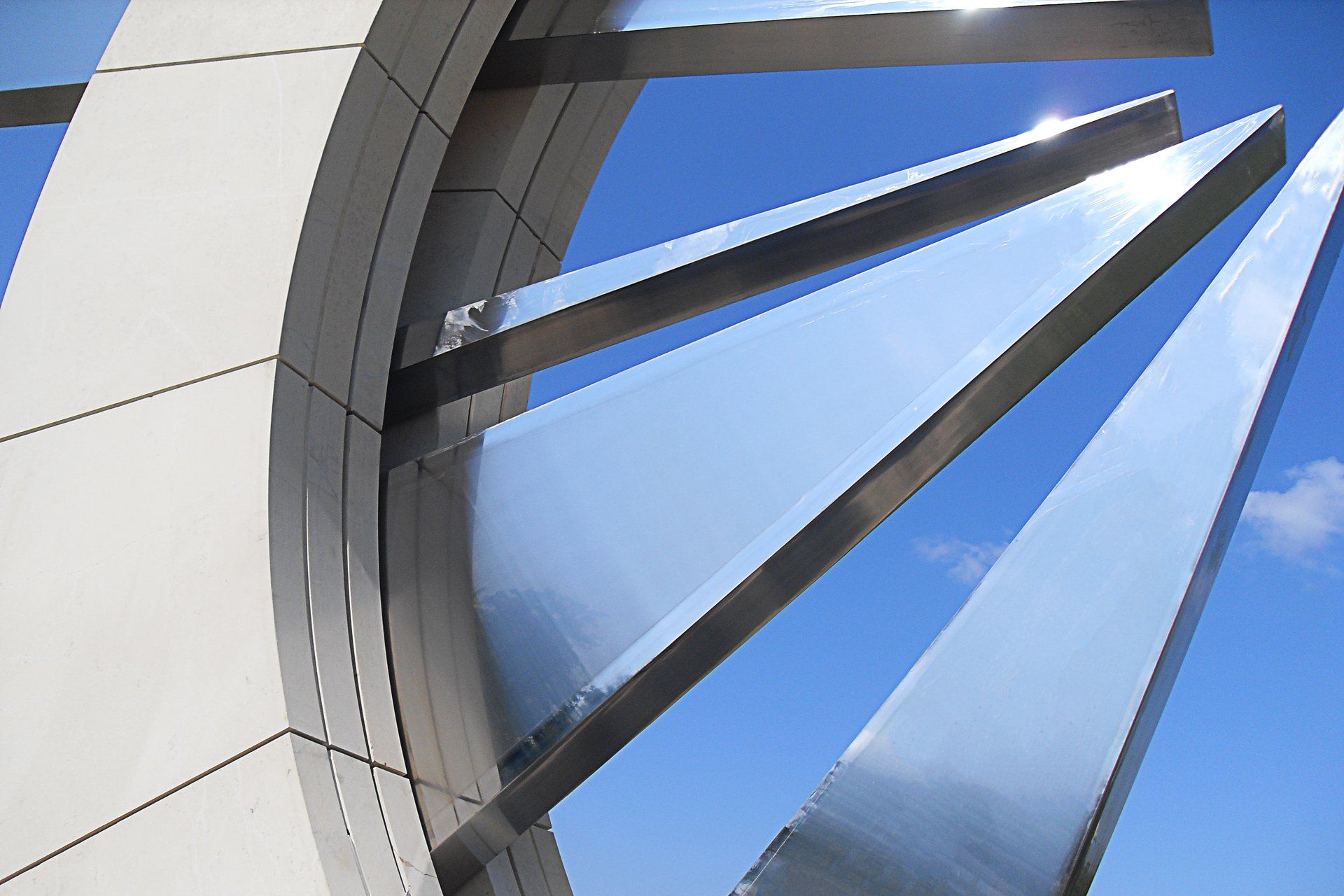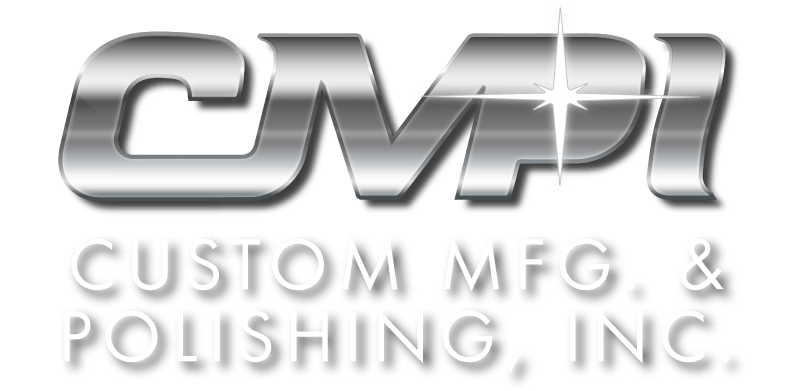How To Ensure Compliant Steel Handrail Solutions
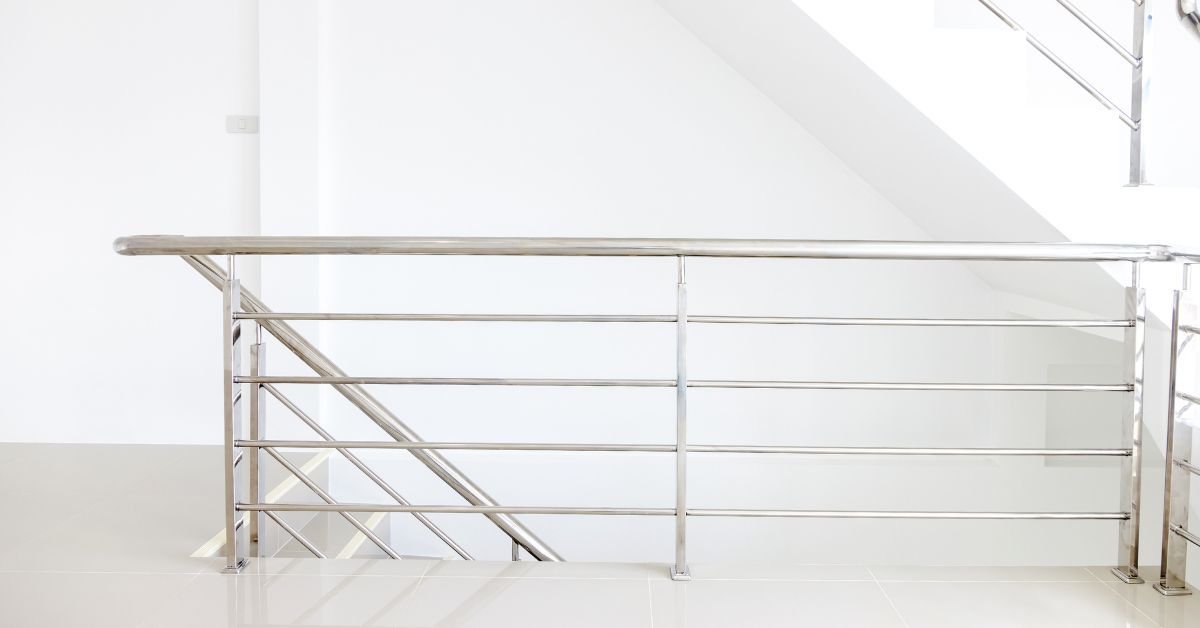
Ensuring the safety and compliance of steel handrails in various environments is essential for both public and private spaces. From residential buildings to bustling commercial hubs and heavy-duty industrial sites, well-constructed handrails are vital. Handrails are not merely functional elements but are integral to preventing accidents and ensuring accessibility. Continue reading to learn how to ensure you have compliant steel handrail solutions in place.
Why Are Compliant Steel Handrails Crucial?
Steel handrails play a critical role in safeguarding people in different settings. Whether it’s providing support for someone climbing stairs or offering stability on a ramp, the presence of sturdy handrails can make a significant difference. The importance of compliance becomes evident when considering the potential risks of non-compliance. Non-compliant handrails can lead to severe accidents, resulting in injuries or even fatalities. Furthermore, property owners and managers may face legal issues if their handrails do not meet mandatory safety standards.
In residential areas, handrails are essential for accessibility, providing the necessary support for individuals to move around safely. In commercial settings, compliant handrails ensure that customers and employees can navigate spaces without fear of accidents. Industrial environments, with their complex and often hazardous settings, require robust handrails to protect workers from falls and other injuries. Therefore, ensuring compliance in every setting is not just a legal obligation but a moral one.
Key Regulations and Standards
Several regulations and standards govern the design, installation, and maintenance of steel handrails. These regulations ensure that the handrails provide adequate support and safety for all users. One of the primary regulations is applicable building codes, which vary from one jurisdiction to another. Building codes stipulate the height, width, and strength requirements for handrails, ensuring they are safe and durable.
The Americans with Disabilities Act (ADA) is another critical regulation that impacts handrails. The ADA sets specific requirements to make buildings accessible to individuals with disabilities. This includes guidelines on the height, diameter, and distance of handrails from walls. Compliance with ADA standards is not only a legal requirement but also a demonstration of commitment to inclusivity and accessibility.
Other important standards include the International Building Code (IBC) and the National Fire Protection Association (NFPA) guidelines. These standards provide detailed specifications for handrails in various settings, ensuring they can withstand the demands of different environments. By adhering to these regulations and standards, property owners and managers can ensure that their handrails are safe, reliable, and compliant.
An Overview of OSHA Requirements for Steel Handrails
The Occupational Safety and Health Administration (OSHA) also plays a significant role in regulating the safety of steel handrails, particularly in industrial settings. OSHA’s requirements protect workers and prevent accidents in workplaces. According to OSHA, handrails must be able to withstand at least 200 pounds of concentrated load applied in any direction. This ensures that handrails are robust and capable of providing adequate support.
OSHA also specifies the height requirements for handrails, stating that property owners should install them at a height of 42 inches, plus or minus 3 inches. This height is optimal for providing support and preventing falls. Additionally, OSHA requires handrails to have a smooth surface to prevent injuries such as cuts and abrasions. Sharp edges and rough surfaces can pose significant risks, especially in industrial environments.
Another critical aspect of OSHA’s requirements is the need for regular inspections and maintenance. Owners must inspect the handrails periodically to ensure they remain in good condition and free from defects. They must also address any damage or wear promptly to maintain the safety and integrity of the handrails. By following OSHA’s guidelines, businesses can create safer work environments and reduce the risk of accidents.
Compliant Steel Handrail Solutions
Achieving compliance with steel handrail solutions involves several key steps. The first step is to select the right materials. High-quality steel is essential for ensuring durability and strength, and the type of steel used should be resistant to corrosion and capable of withstanding the demands of its environment. Galvanized steel and stainless steel are popular choices due to their durability and resistance to rust.
Design considerations are also crucial for regulatory compliance. The handrails should meet the specific needs of their environment; this includes considering factors such as height, width, and the distance from the wall. Additionally, the design should ensure that the handrails are easy to grip and free from sharp edges.
Installation best practices, such as anchoring handrails securely to walls or floors to prevent wobbling or detachment, play a vital role in ensuring compliance. The installation process should follow the manufacturer’s guidelines and comply with all relevant building codes and standards. Regular inspections and maintenance are also essential for ensuring that handrails remain in good condition and continue to provide the necessary support.
The Importance of Professional Advice
While it is possible to achieve compliant steel handrails on your own, seeking professional advice can provide added assurance. Professionals have the expertise and experience to ensure that all aspects of handrail design, material selection, and installation meet regulatory requirements. They can also provide valuable insights and recommendations based on the specific needs of the property.
Hiring professionals can also save time and resources, as they can efficiently handle the entire process, from initial assessment to final installation. This allows property owners and managers to focus on other essential tasks while ensuring that their handrails are compliant and safe. Additionally, these professionals can provide ongoing support and maintenance services, ensuring that the handrails remain in good condition for years to come.
Work With a Leading Stainless Steel Handrail Supplier
As a leader in the handrail industry, CMPI can enhance your space with our custom stainless steel railings. Our handrails provide a clean and sophisticated look that will keep everyone safe, and we will work closely with you to design a handrail system for your specific application. Our design team is happy to create the perfect solution for your project and expertly install it on-site. Get in touch today to learn how a custom stainless steel handrail system can benefit your space.
